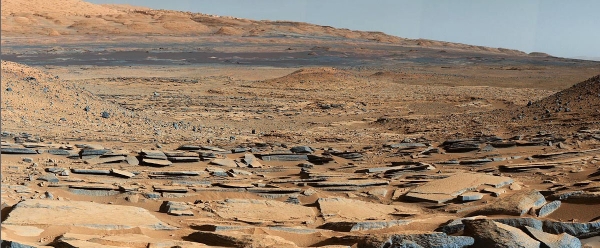

Geology and atmosphere on mars
Mars is not just any celestial body, it has become a geological and geographical object.
Outside the Earth, Mars is now the planet that is the best-known celestial body. This is because it is the most accessible and the most similar to the Earth.
Mars is similar to the Earth in the sense that it is a rocky planet that has been formed near the Earth, at the same time, with the same material and in the habitable zone of the Sun (even if located at its margin). The difference is mainly its mass and this has had very important consequences. After the brilliant demonstration of the astrophysicist Alessandro Morbidelli, most people agree on his hypothesis that the giant gas planet Jupiter began its accretion beyond the ice line (about 3.5 AU) before the planets of the inner solar system begin to aggregate their own matter. When it was massive enough, it began to spiral slowly toward the sun in the process of absorbing matter into her Hill sphere. It did so by attracting Saturn in its wake (sending matter in its direction within the framework of a favorable orbital resonance) and it was only when the two planets entered another resonance stabilizing them, that the couple was pulled back to the outside of the system (the “grand tack”). At that time, Jupiter had reached a distance of 1.5 AU from the Sun, near where Mars would eventually evolve latter and much of the material that could have been used by Mars to grow, had been swallowed by the monster. If Saturn had not somehow “retained” Jupiter, there would be no rocky planet in our inner solar system but, just like in many star systems, a hot Jupiter orbiting very close to its star. When Mars was formed, it could only gather the matter that remained at its distance from the Sun. The result is that the mass of Mars is only one tenth of that of the Earth (or Venus).
The consequences are numerous:
First, the amount of radioactive material decaying inside the planet (thorium, potassium and uranium) is less important than it should have been and the heat produced by this decay has been lower; as a result, the planet has cooled faster than the Earth and its crust has thickened more rapidly; secondly, the gravitational attraction generated by the mass has been weaker; as a result, the planet has lost most of its atmosphere quickly. It was already about the same as today, about 4 billion years ago. Many subsequent volcanic episodes periodically restored a relatively thick atmosphere, but when volcanism calmed down (relatively faster than on Earth due to the thick crust), about 3.5 billion years ago, the volume and the atmospheric pressure level remained low most of the time. Low atmospheric pressure means a very limited possibility of liquid water, and abundant radiation reaching the ground. Low gravity had another negative consequence: it probably attracted fewer asteroids and comets loaded with ice; which resulted in less water on the ground. This means that the water content (not recycled by plate tectonics) of the planet was perhaps less than that of the Earth, which led to less ductility of the crust and a shorter period of plate tectonics floating on the magma.
Without plate tectonics, the rocks could not be “kneaded” and enriched continuously, and volcanism had to be more catastrophic than permanent and more stable geographically (Tharsis) than on Earth as it was very difficult for lava to find a way to the surface.
The advantage for us is that, after a relatively short period (a few hundred million years) during which Mars was covered with liquid water under a rather thick atmosphere, it became arid, except for some exceptional revivals, and maintains the image of an ancient hydrated land, very little modified by erosion (apart from consequences of intermittent volcanism and constant wind erosion).
Today, Mars presents two quite different parts because of a spectacular "crustal dichotomy" (perhaps the accretion of a last giant planetoid not completely spread out on its surface). By and large, the surface of the northern hemisphere is smooth and is several kilometers (up to more than 4 km) below the datum, its mean altitude level. It is mostly covered with lava (there are huge volcanoes on the periphery of the datum) and debris from catastrophic floods from huge faults and rivers in the Southern Highlands. The surface of the Southern hemisphere is much higher than the datum and it is very craterized and much older. It is therefore in the Southern hemisphere that we can find most of the oldest surface of Mars, that which remains a testimony of the time when there was running water on the planet over very long periods of time. There are even areas where fossil local magnetic fields can still be observed. Unfortunately the highlands are more difficult to access (from space) than the lowlands because the terrain is littered with obstacles (craters) and being higher, is covered by a thinner atmosphere, hence offering less lift capacity to spaceships coming from Earth.
For future astronauts a positive characteristic is the presence of permanent ice just covered by a thin layer of regolith, in many areas of the planet, even the intertropical zone. This is due to the fact that the planet is not stabilized like Earth by a sizable Moon and it changes obliquity about every 140.000 years. There will be no need to go to the poles to find ice!


